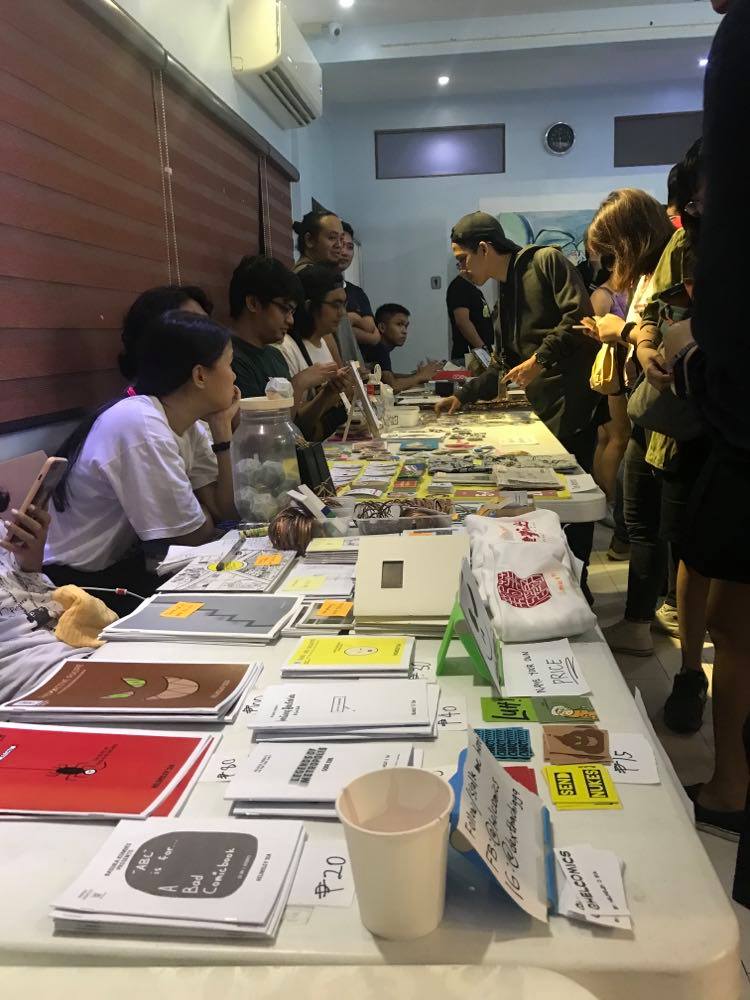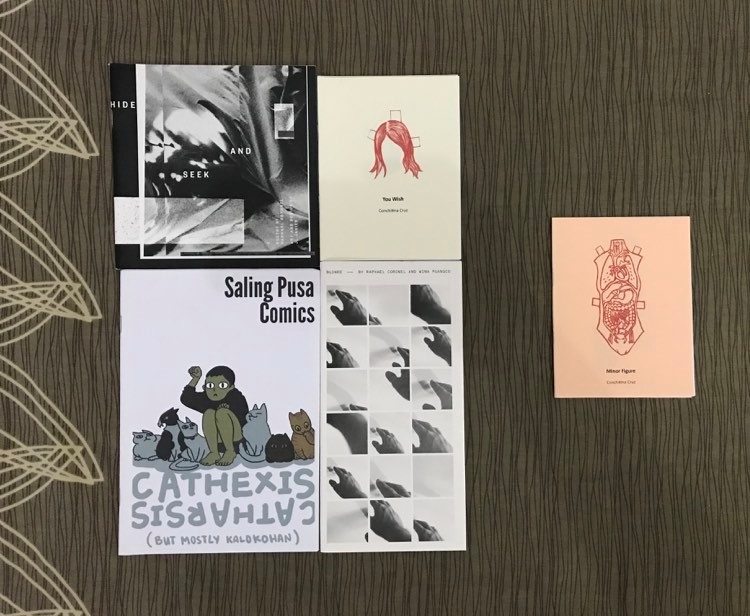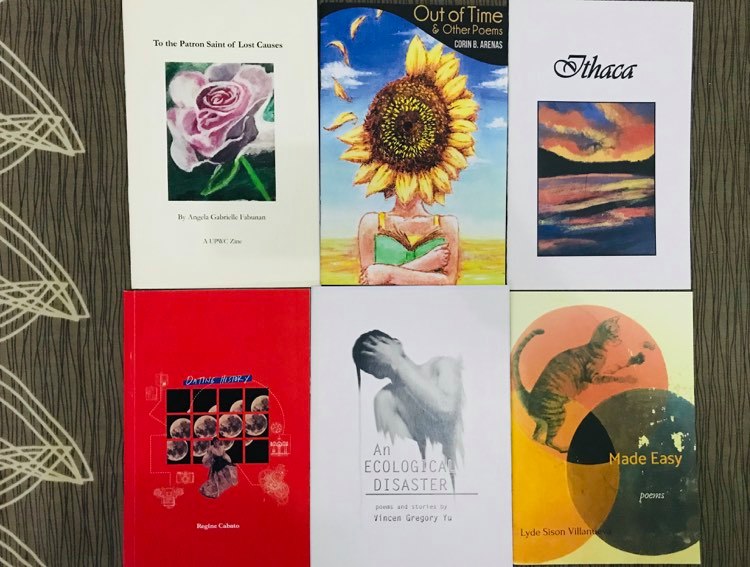One year ago this month, I marched to Popular Bookstore in Tomas Morato to support friends who embarked on publishing their poems independently. As if it is not hard enough to write (and write poems) while they make a living, they also have to deal with finding means to find readers.
And since bringing one’s work to the attention of publications and book events entail resources and energy that some of them could not yet muster, they have to be extra creative and enterprising about bringing their work out there. Better Living Through Xeroxography (BLTX) has been a constant go-to avenue for them in accomplishing that goal. And if only to help in whatever little way, I set it as a goal earlier this year to write about these writers, the works they showcased in BLTX 2019, and the event itself. It even seemed fit as I learned that the event is being done too in other towns and cities outside Metro Manila, such as in La Union in January this year, I was hoping that informing readers about it would help.

But then the government failed to take timely action and close our borders at the close of January, and the rest is history. We are now still in lockdown, said to be the longest in the world. I lost a most dear friend, also a writer and a noble and beloved one, to COVID-19. And my friends found it harder to eke out a living while laboring over their poems and struggling with their art, under these pandemic conditions. Also, not only the creatives were struck – the pandemic took a toll on those working in the news front too. Some of my teammates had to assist in COVID-19 reportage in the first half of the year, leaving our own team in bare bones operations and shelving stories we originally intended to pursue, all because we are all living under war-like times and must first survive.
As a fellow journalist and another friend asked, if I may paraphrase him, how can poems still matter now? I myself don’t know. If I could trade poems or books in exchange for the life of our friend, I would, but who would be the takers? I don’t know.
Nonetheless, and no matter how late, I believe it is but proper to still share some answers I got about independent publication from one of BLTX’s co-founders and co-organizers, Adam David, from a correspondence we had earlier this year. He gave some frank and rather sharp answers about how BLTX began, and its goals, explaining that it “started as a call to arms against the prevailing systems of mainstream literary production at the time.” David stated that he “put together a manifesto about weaponizing the small press to enact literary patricide, enabling actual artistic freedom.” The first expo was then later staged, he said, “celebrating artistic freedom and youthful energy and the death of mainstream literary production.” People may or may not agree with some points that David said, I myself do not understand some, but I suppose that as long as any effort provides a means for people to express and be heard, then that effort is worth carrying out, may it be mainstream or independent, or even underground.

As per the official Facebook page of BLTX, 2020 was supposed to have been their 10th year, and in place of a staging of their usual annual independent fair of creative works, they issued a call for past exhibitors to participate in the creation of an ezine, to mark a decade of BLTX. While that may still be in the works (a Dec. 5 deadline for contributions was announced), here are the excerpts of the aforementioned interview. It may take a long while before we see another physical execution of the event, another gathering of writers and readers, but I believe we can still try to pick up from where we left, in any manner we can, to keep writing and reading, to survive.

When was the very first expo staged and where was it held?
The first expo was staged in Ilyong’s, a videoke bar along Kalantiaw, Project Four, on Dec. 3, 2010. The organizers shift with every event, depending on the particular needs of the specific time and place the expo-fora-workshops will be happening in, but for the last four years or so, it’s been co-organized by Gantala Press, Magpies Press, Studio Soup Zine Library, and the Youth & Beauty Brigade.
While a lot of writers dream of being published by a huge publication house, it is refreshing and interesting to see the enthusiasm of writers who venture into independent publication of their works. Do you encourage this? Why? What are the benefits and challenges of publishing independently?
We believe that production [that is] independent from any and all mainstream institutional support is the only way to lead a creative life free from exploitation of yourself and others, free from the compromises one needs to make when benefitting from mainstream institutional support, be it economic or cultural capital, free from the manacles of tradition forged by the selfish self-interest of corrupt navel-gazing padrinos and matronas, free from the conservative politics and mores of straight mainstream culture that only seeks to justify and perpetuate itself. Institutions just like saying that people need their support because without people supporting them, institutions are powerless, while people can live perfectly fine lives without powerful institutions supporting them. The risks in running an independent creative life are practically the same with running a creative life dependent on institutional support, only the independent creative life brings better rewards: you own everything; you don’t owe anybody anything; you get to say what you want to say the way you want to say it.
How does a writer apply to exhibit in BLTX? What are the requirements for the selection? Upon passing as an exhibitor, what does the writer need to prepare? Are there fees or promotional materials the exhibitor needs to make?
Anybody can sell their stuff in the expo, as long as they agree with its practice of artistic freedom and unwavering support for anti-imperialist action. So: no mainstream bullshit, no fascist prattle. They only need to contact us (mainly by email) when we sound out a call for participants and pay for the table fee, which sometimes is free, often P500. It pays for the rented tables and chairs, maybe a couple of tents, and the first one hundred bottles of beer that everyone is free to drink. But we did waive this rule in our recent expos, December 2019 at Timog, Quezon City, and January 2020 at La Union, and are actively looking for a cost-effective alternative to [beer] that is not produced by abusive exploitative companies. The participants are then in-charge with promoting the event to their audiences, using publicity media available to them, featuring their signature aesthetic, all in aid of emphasizing the diversity of local small press publishers, to tap their usual audience, to get them to attend the expo and find all the other local small press publishers they might have never been able to find or even be aware of.
Would you say the exhibit is profitable for both exhibitors and organizers? If not so much, what pushes you to keep at it through the years? If yes, what is the key to having at least a reasonable return of investment?
The profit motive never has been the driving force of the expo nor of the majority of its participants in the last ten years, but I believe some of them are able to turn in a modest profit, or at the very least recoup expenses. The motivation for most – definitely the motivation for the organisers – is to allow creative production outside of the main streets of culture, outside the grocery aisles of culture, first and foremost to exist, then to persist. A lot of us already do a lot of things for money – staff writer for a newspaper, layout artist for a magazine, editor for a website, cameraman for a TV show, mixer for a podcast, curator for a gallery, musician for a hotel lobby, etc. – and keeping in mind that there is no shame in labor seeing as we first need to be able to find ways to secure and maintain a certain level of quality of living before we get the chance to practice our more relevant work. But it is in labor that we already commit a lot of our creative energy to compromise; there should be a space for us to commit a lot of our creative energy to uncompromise. The expos and fora and workshops are intended to be that space for everyone who supports its ethos.
How was the exhibit in Quezon City last December 2019? Were there more writers? Was the venue bigger/better? Were there more attendees/readers/buyers who came? Was there a wider diversity of readings/products exhibited/sold?
The Dec. 14, 2019 expo and fora – staged at Sikat Studio, Tomas Morato Avenue, Quezon City – was our ninth year, but probably close to our twentieth happening, was pretty successful, in the sense that new and old people came and went, zines were bought and sold and traded, new stuff were launched and discovered, new partnerships were made. The venue was bigger, four rooms across two floors, so there were more participants, a little over a hundred; and more buyers, the rooms were [full]. There were definitely more new participants, and as the expo began to move towards an even more vocally activist route five years ago, the work made available has increasingly become predominantly feminist, LGBTQ+-focussed, anti-fascist and younger.
What would you consider to be the most successful, if not memorable, staging of the expo? What milestone(s) did these stagings accomplish?
All the expos and fora so far have memorable stuff in them. The first Davao expo was memorable for me for having local legend Tita Lacambra Ayala as guest, reminding everyone that she’d been doing the independent art life since at least the early 1980s. The first Naga expo was memorable for me for having zines of six-word stories (in Bicol) written by young college students from a nearby agriculture school. The first Baguio expo was memorable for me for having military police drop by to glare at us from a distance because one of the books launching that day (which was Cordillera Day) was a biography about Recca Monte. The first La Union expo was memorable for me for finally seeing in practice what I’d only previously fantasized about, which was staging the expo in a community library. For the Quezon City expo, the most memorable for me so far was the first one devoted exclusively to works produced by women and members of the LGBTQ+ community. It was memorable for the surprising number of people who kept asking why we were doing it, and if that meant there wouldn’t be anything in the expo made by men. Hosting an expo exclusive to women and the LGBTQ+ is apparently still that strange to a lot of people.
For some years now, we’ve heard of BLTX going to other provinces/cities in the country. What made you venture into bringing the expo outside of Metro Manila? Where was the first such expo, and what other places do you wish the expo to reach? Are these stagings as strong and vibrant as the ones held in Metro Manila? What makes these provincial exhibits unique?
The motivation for staging the regional expos was to test the durability of the project’s core concepts, small press expo and fora promoting DIY production, not just outside of its organizers’ immediate environs (Quezon City) but also out of the hands of its core organizers (all Manila peeps from Manila academic institutions) thinking if the project is good enough, it should be able to survive that sort of decentralization. The first to organize was a couple of friends in Davao, then in Baguio, then in Naga. All this happened within a year of us core organizers opening up the project to people from outside Manila, which was 2015. The core organizers don’t really have a checklist of places to go to, we merely work on what’s suggested to us by whom, and start there. That’s how the La Union expo happened, and hopefully how the conversations about a possible Batangas expo will happen, especially after [the Taal] explosions. All the expos across the country have been generally well-attended and well-received by their respective communities. Our practice is, the core organizers, meaning us Manila peeps, take on support and advisory roles to the regional organizers, who lead the whole thing to whichever direction they want to go to. We run it this way because we believe the local organizers know more about what needs doing in their communities than we do, the majority of the help that we non-local peeps can provide is whatever wisdom gathered from experience from all the organizational work, and also access to contacts gathered from working with a lot of different types of people and organizations. So the regional expos and fora focus on work and issues that are relevant to their communities, with the overall philosophy of independent art production as connective tissue holding all our arms together in one big country-wide group hug.
For future stagings of BLTX, what other things do you hope to accomplish? How do you plan to carry these out?
Our plans for the coming years is to even more pointedly direct our fora and workshops towards figuring out just exactly how to help [address] this awful sociopolitical situation we currently find ourselves in with [the administration] and their novel weaponization of misinformation and disinformation. We plan to do more educational discussions, facilitate direct interactions between concerned creators and people directly affected by state-sponsored terrorism, help out more organizations with the production of and dissemination of their informational materials, teach more kids how to exercise their hopefully politicized artful expressions independent of institutional, even parental, support. We’ve been working on developing relationships the last ten years to help make this happen, first with regards to literary production, and now finally towards more important concerns.
If you have any message to writers hoping to exhibit their work through BLTX, please feel free to share it through us, and if you have tips or advice for them, please do share those too.
Stay in school, mag-ingat sa DOM, let’s all monitor what Mayor Vico Sotto is doing in Pasig, [and] seek healthier and more sustainable food options! NVG
RELATED STORIES:
From 24/7 service to ‘estero-telling’: Checking up on the state of public libraries
Augie Rivera on how telling painful truths through children’s books can help make a better world
Likhaan 11, or why we must start this year reading Philippine literature


